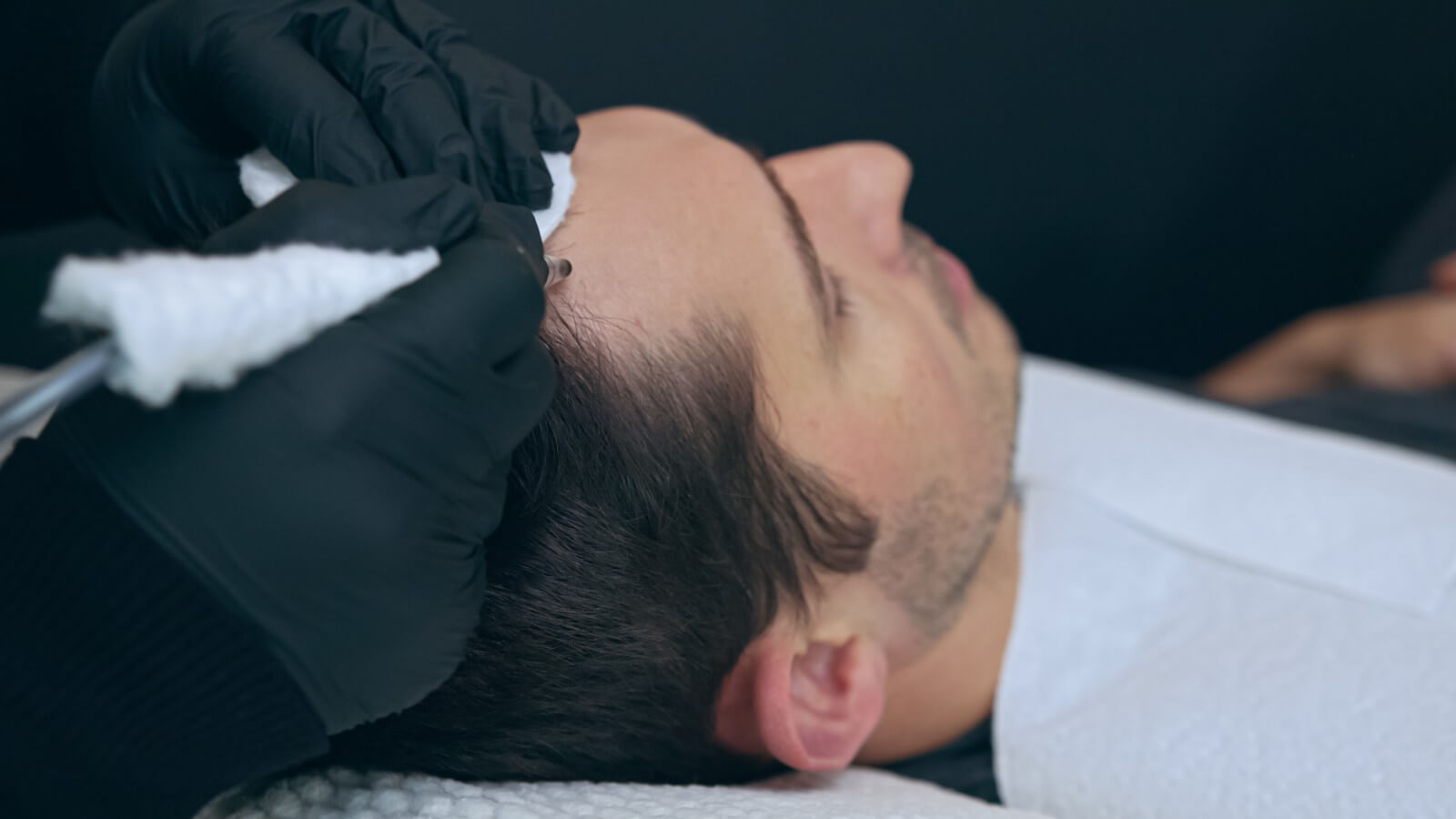Chiropractic Marketing: 5 Ways To Do It Better
Are you struggling to grow your chiropractic marketing strategies?
With the level of competition in the market, it can be hard to grow chiropractic marketing because of the million chiropractors vying for the same pool of patients as you are. How then do you stand out and attract new patients in this multitude of chiropractors? It is by having a strong online presence.
A strong online presence can help your clinic:
- Appear at the top of search engine results
- Attract new patients
- Convert them to paying clients
Fortunately, there are several effective strategies to boost your chiropractic marketing and reach a wider audience. This article explains five proven methods that will help you increase online visibility and attract more patients to your practice.
Table of Contents
- Upgrade your website
- Optimize your website with SEO
- Use content marketing to drive valuable traffic to your site
- Use social media to engage and educate
- Encourage patients to write reviews for your business
- What’s the next move of your chiropractic clinic?
Upgrade Your Website
Your chiropractic clinic’s website is often the first point of contact between potential patients and your practice. If your website is extremely slow, has outdated designs from the 1990s, or has a poor user experience, your potential customers can get frustrated and leave your site to your competition. To level up the game of your chiropractic marketing, it’s important to make a positive first impression. Here’s how you can upgrade your website for better online visibility:
Choose a clean and responsive design layout
An updated design can instantly give your website a sleek and professional look, all while keeping your brand message intact and consistent across every page. Design layout is about arranging text, images, and other elements in an attractive and organized way. So, consider a clean and responsive design that looks great on desktop and mobile devices and is easy to navigate.
Ensure your website loads faster
No one likes a slow website. It’s frustrating. That’s why you should optimize the images, enable browser caching, and reduce unnecessary code that may slow down your site’s loading times. When you do these things, your website will load faster and keep visitors happy and engaged.
Make your website mobile-friendly
With 95 percent of people using smartphones to browse, having a mobile-friendly website is a no-brainer. Your website should look great on all screen sizes and also be responsive. This is because Google ranks websites that work better on mobile higher than those that don’t.
Add a call to action
Your service-related pages should have a call to action (CTA). This is a button, link, or message that prompts your visitors to take the next action. Ensure your CTA is personalized instead of being generic. It makes your site more human.
Here are two potential examples of a call to action when doing chiropractic marketing. Which one of these examples would you click on?
Example 1: Book My Appointment Now
Example 2: Book An Appointment
If you said Example 1, you’re correct!
Example 1 feels personalized. It makes you feel important and in control.
Example 2, on the other hand, looks meh. It doesn’t trigger an urgent emotional response from the potential client.
Calls to action like Example 2 are common on chiropractic clinic websites. That’s why they don’t get the desired leads and revenue. However, by making your CTAs unique, you can make a statement.
Want an upgraded website that keeps your chiropractic marketing running with more new patients? OppGen Marketing can help give your website a sleek and professional look.
Optimize Your Website With SEO
One of the most effective ways to increase your chiropractic marketing is by optimizing your website for search engines. This process is known as search engine optimization (SEO). It involves changing your website’s structure and content to improve its visibility in search engine results. It goes beyond just stuffing random keywords into your content that could make search engines flag you down.
Here’s how you can optimize your website for search engines:
Keyword research
Keyword research is the first step in increasing the online visibility of your chiropractic clinic. It helps you discover the valuable search queries your potential customers are typing into search engines like Google when looking for information about your products and services.
When used correctly, keywords for the content you publish can rank your website higher in search engine results and attract more traffic to your site. Keyword research also goes beyond stuffing random keywords in your articles, as it can lead to search engines flagging your website down.
How do I know which keywords my potential patients are using?
Find the words and phrases your visitors might use to find solutions to their problems. Here’s an example of a seed keyword for your practice: “Chiropractic treatment”. With these keywords, you might have content titles such as:
Example 1: 3 Reasons Why Chiropractic treatment is good for your lower back Pain
Example 2: 5 things To Do Before And After Your Chiropractic Treatment
- You can also use keyword research tools such as Google Keyword Planner (GKP), Ahrefs, Semrush, and Answer the Public to discover more keywords your competition hasn’t covered yet.
- Check the “People also ask” section on Google to find the exact words your potential patients are using.
Take the stress off your shoulders. Contact OppGen for an effective keyword research strategy to boost your practice’s visibility.
On-Page SEO
On-page SEO involves optimizing elements on your clinic’s website to improve its visibility online. It includes optimizing content and meta descriptions and ensuring a user-friendly experience.
Here’s an on-page SEO checklist to help your clinic website rank higher on search engines:
- Identify and use the right keywords in your content
- Optimize the title tag with your primary keyword
- Write your headline using the H1 tag
- Write a meta description that makes visitors want to click on your page
- Check that your URL slug is clear, concise, and descriptive. Example: oppgen.com/blog/what-is-a-chiropractor/
- Add target keywords to your body content, but never stuff. Remember, you’re writing to humans, not robots
- Review your content quality. Make sure it’s well-structured and valuable
- Mark up your content subheadings with header tags using H2, H3, and H4 tags.
- Improve navigation with internal links. This helps your potential client find more helpful information on your website.
- Add engaging images and videos where necessary.
- Apply data that makes it easy for search engines to categorize your content. E.g., health services
Off-page SEO
On-page SEO means activities performed on the website, whereas off-page SEO means activities done off your page. You need off-page SEO to get visitors and search engines to see your site as more trustworthy and authoritative. It includes building backlinks and increasing engagement and sharing on social platforms like Facebook, X, LinkedIn, and Medium.
Use Local SEO to reach and attract new patients in your area
If your chiropractic marketing goal is to primarily serve a specific geographic area, then implementing local SEO strategies can be your best bet there. Local SEO allows your website to appear in local search results, making it easier for potential patients to find your businesses and patronize your services.
Start by creating location-specific landing pages on your website, each targeting a different area that your clinic serves. For example, if your clinic has multiple locations throughout a city, create a separate landing page for each one. Optimize these pages with relevant keywords, include testimonials or success stories from patients in each location, and provide location-specific information such as addresses, phone numbers, and directions.
Alternatively, you can create “Google My Business.” It is one of the most effective local SEO strategies and doesn’t require a fancy website.
Here’s how to create a Google My Business account for your clinic and boost your chiropractic marketing:
- Create a Google account for your business if you don’t have one yet.
- Go to create a profile.
- Type the name of your business. You’ll get notified if the name you chose already exists and suggest businesses as you type.
- Search for the category your chiropractic business fits in.
- Select Next.
- Choose whether you have a location customers can visit
- Enter the service area of your business. You can add up to 20 service areas
- Enter your business phone number and website URL.
- Click Next
- Click Finish
- Select a verification option. You can choose to verify now or later.
And just like that, your chiropractic clinic Google business account is set and ready for use.
Paid Traffic Using Pay-Per-Click (PPC)
Pay-per-click (PPC) advertising is another effective strategy for chiropractic marketing to increase visibility online. PPC allows you to reach your target audience and promote your services through ads. The most common platform for PPC is Google Ads. So, instead of having visitors, find your page organically through SEO, you can buy visits to your website. Meaning that you pay a fee each time people click on your ad.
How To Use PPC (Google Ads) to Scale Your Chiropractic Marketing, Attract New Patients, And Convert Them To Paying Clients
Keyword Selection: Begin by selecting relevant keywords or search queries that potential patients might use when looking for chiropractic services. These keywords should reflect your offer.
Example: “Chiropractic clinics near me” or “Best Chiropractor for lower back pain”
Ad Creation: The next step is to create a compelling and informative ad that sells your offer. The ad should include a headline, ad copy, and a call to action. It should also highlight your clinic’s unique selling points, such as experienced staff, specialized treatments, or free appointment booking.
Bidding and Budgeting: Before you run an ad, you need to set a budget for your campaign. This determines how much you’re willing to spend daily. You also have to bid on the selected keywords, as each click costs a certain amount based on keyword competitiveness. Hence, the bid amount, along with ad quality, influences the ad placement.
Ad Display: Your ad pops up when a potential patient searches for a relevant keyword on Google. The ads may appear at the top of the search results or in designated ad spaces.
Landing Pages: To ensure a seamless user experience, you should link the ad to a relevant and optimized landing page on your website. This page should provide more information and have a CTA that encourages visitors to take a desired action, such as scheduling an appointment.
Monitoring and Optimization: This step is crucial because that’s how you determine if your ad is working or not. Monitoring and optimization help you determine when to adjust your keyword bids and track your conversions, such as appointment bookings or product sales.
Use Content Marketing To Drive Valuable Traffic To Your Website
If you want to improve chiropractic marketing online, creating and sharing valuable content is an excellent way to go. This allows you to establish your clinic as an authority in chiropractic care and attract potential patients. Here are some content marketing strategies you can implement:
Blogging
Blogging allows you to showcase your expertise and provide valuable information to potential patients. By consistently publishing informative and relevant blog posts, you can attract a larger audience and position yourself as a thought leader in the chiropractic industry. Also, when creating blog content, focus on relevant topics for your target audience. For example, you could have potential blog posts such as:
Blog post 1: Benefits of chiropractic care
Blog post 2: Chiropractic treatment for lower back pain
Blog post 3: Tips for maintaining spinal health
By addressing these topics, you can attract individuals who are actively seeking chiropractic care and position yourself as a trusted source of information.
Video Marketing
Another effective strategy for increasing chiropractic marketing is to create informative and engaging videos about chiropractic treatments, patient success stories, and exercises for pain relief. Additionally, you can share these videos on your website, social media, and video-sharing platforms like YouTube, Instagram, and TikTok.
Use Social Media To Engage And Educate Your Audience
If you’re not leveraging social media platforms yet, you are missing out on a powerful tool. With billions of active users on platforms like Facebook, Twitter, and Instagram, you can increase your online visibility, reach a wider audience, and attract more patients to your chiropractic clinic. Here’s how to make the most of them:
Choose a platform
Start by creating business profiles on the social media platforms that are most relevant to your target audience. This may include platforms like:
Next, optimize your profiles by adding relevant keywords, a compelling description of your clinic service, and a link to your website.
Share content across your selected platform
Now, it’s time to start posting engaging and informative content that is relevant to your target audience. This could be in the form of posts or videos. You can alternate both to see which resonates with your audience more. For instance:
- Facebook: posts and videos
- Twitter: Tweets, threads, memes, spaces, videos
- Instagram: Videos and carousel posts
- LinkedIn: Posts and carousels
Engage with your audience
It is not enough to share content on your social media platform and leave it as such. You need to keep your page active using engagement tactics. Some of these include asking chiropractic-related questions, running contests, or offering exclusive promotions. This fosters a sense of community, thereby expanding your chiropractic marketing practice and attracting more patients via DMs, comments, and leads from your websites.
Use paid social media ads
Social media marketing via paid ads is effective for increasing your chiropractic clinic’s online visibility. It allows you to target specific demographics, locations, and keywords to reach potential patients who are actively searching for chiropractic services. Examples include Facebook and Instagram ads. Facebook also has different campaign objectives, including awareness, traffic, engagement, leads, app promotion, and sales.
With all of the options Facebook Ads has to offer, you’ll certainly find the ones that are most effective for marketing your chiropractic services. Feel free to reach out to OppGen Marketing for additional guidance.
Encourage patients to write reviews for your business
In addition to optimizing your website and leveraging social media platforms, using online directories and review sites can add value to your chiropractic marketing. These platforms allow potential patients to find and evaluate your service based on reviews and ratings from previous patients.
So start by claiming and optimizing your clinic’s profile on popular online directories, such as
- Google My Business
- Yelp
- Healthgrades
Check that your clinic’s information, such as address, phone number, and business hours, is accurate and up-to-date. Also, ensure that your clinic’s information is consistent across all platforms to avoid confusion and improve your search engine rankings.
Additionally, encourage your satisfied patients to leave positive reviews on these platforms. It can significantly enhance your online reputation and attract more patients. Or you could reward them with a free consultation service.
Monitor And Respond To Reviews
Regularly monitor and respond to reviews. Positive and negative. It shows potential patients that you value their feedback and are committed to providing exceptional care.
What’s the next move for your Chiropractic Marketing?
Now that we have talked about why it is important to make your chiropractic clinic more visible online and given you some ideas for how to do it, it is time to get started. Start using the strategies, including website optimization, content marketing, social media, and reviews.
Make your clinic stand out online in a field where 95% of chiropractors compete for patients. Contact OppGen for a free consultation to boost your online presence and practice.
Remember, this article serves as a foundational guide. For more insights on chiropractic marketing services, connect with us today.





